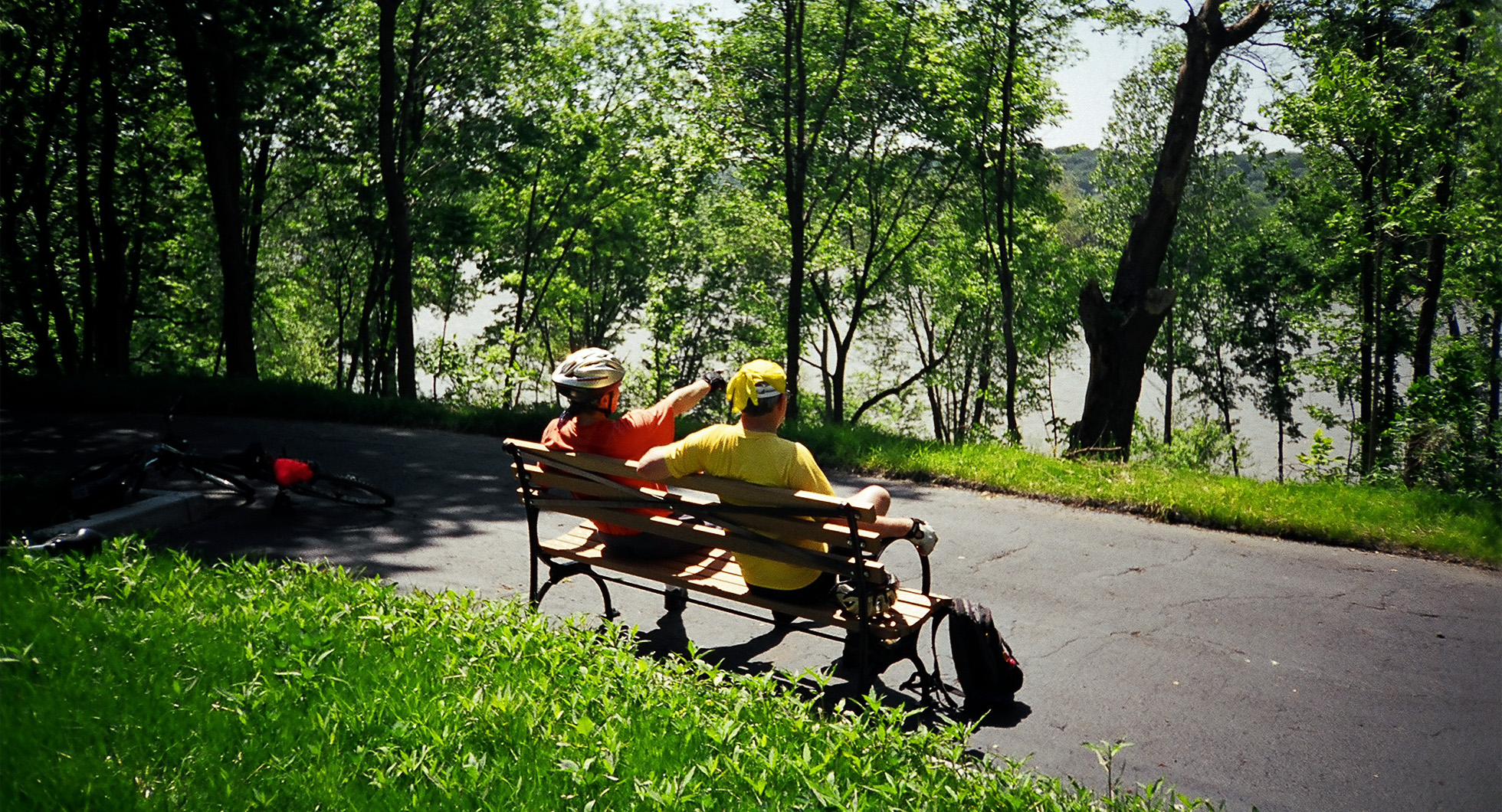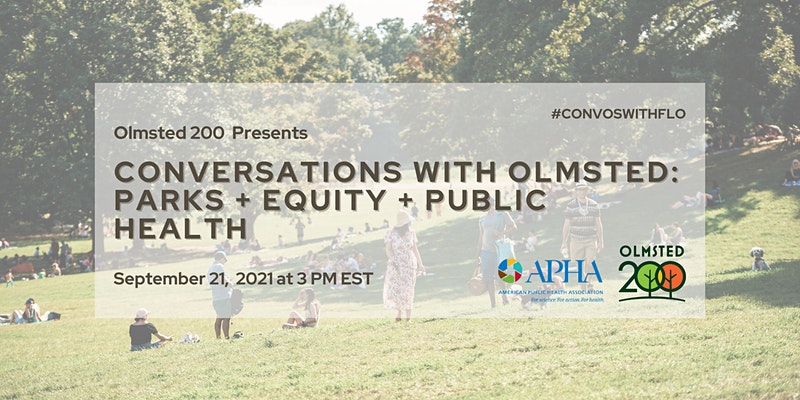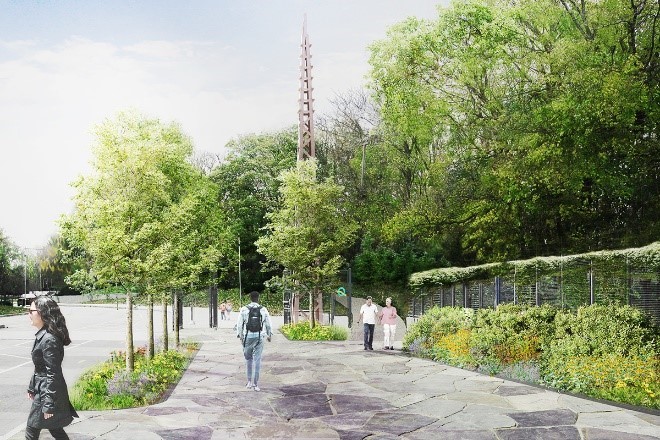
The environments in which we live, learn, work and play significantly impact our health. Having access to safe, quality parks can lead to beneficial health impacts, from increased physical activity to improved social cohesion and better mental health to reduced water, air and noise pollution.
Yet lack of park access, availability, size, safety, recreational facilities and amenities – and past and ongoing racist actions, such as redlining and over-policing of communities of color – present barriers to these benefits for many communities.[i],[ii]
Neighborhoods with park inequities also have increased negative health outcomes, such as higher obesity rates and premature mortality from cardiovascular disease.[iii] A recent study from The Trust for Public Land found that parks located in communities of color are five times more crowded and half the size of parks in white communities.[iv]
Moreover, approximately 70% of Black neighborhoods and 81% of Hispanic communities lack recreation facilities (i.e., sport courts, personal training facilities, etc.), compared to 38% of white areas.[v] Income also plays a role: parks in lower-income communities aren’t as well maintained and offer fewer services and amenities.[vi]
Parks have a role to play in achieving health equity and we must work collaboratively to achieve that vision. For example, health disparities data can be integrated and prioritized for park improvements or new park planning. We all deserve the opportunity to attain our highest level of health.
Below are a few of the public health benefits of parks and ways public health professionals are working to address related health inequities.
Mental Health
Having access to a natural space benefits mental health. Parks can reduce stress, improve mental health and are linked to improved work productivity, higher self-esteem and greater life satisfaction.[vii],[viii] The symptoms associated with childhood ADHD are also reduced when children spend time in natural environments.[ix]
Climate Change
Urban greening and green infrastructure can help cities mitigate and adapt to climate change effects. Urban heat islands – areas with fewer trees, less green space, numerous buildings and impervious surfaces in dense urban regions – can increase the risk of heat-related illness among people living in urban areas.[x] Increasing parks and trees, for example, can reduce the risk of heat illness and flooding by providing more shade and water absorption.[xi]
Physical Activity
Parks provide space for people to be physically active, through walking, cycling, running or other activities like tennis and yoga. People may feel more encouraged to be active when a park is nearby and provides a space that is safe from traffic. Physical activity has many health benefits: it can reduce risk of cardiovascular disease, type 2 diabetes and some cancers.[xii]
Public health professionals have worked across sectors to advance park and health equity. Examples include:
- Using environmental health tracking data to demonstrate chronic disease health indicators associated with the built environment
- Working with public and private sectors, as well as engaging with community members to respond to gentrification by implementing anti-displacement strategies
- Increasing access to parks and tree canopies in low-income communities
- Writing a prescription for physical activity in parks.
Community engagement is also vital to developing spaces created for and used by the people who live there, with the community’s shared vision as the foundation. Parks benefit health. Equitable parks benefit everyone. Let’s all work together to ensure that everyone has the opportunity to enjoy them.
Kate Robb is senior program manager at the Environmental Health, Center for Public Health Policy, American Public Health Association. APHA is also a founding partner of Olmsted 200.
____
- [i] https://www.sierraclub.org/articles/2020/06/it-s-past-time-dismantle-racism-outdoors
- [ii] https://preventioninstitute.org/sites/default/files/uploads/PI_Park_Equity_Policy_Brief.pdf
- [iii] https://www.washingtonpost.com/business/2020/07/31/public-parks-health-coronavirus/
- [iv]https://www.tpl.org/the-heat-is-on
- [v] https://activelivingresearch.org/sites/activelivingresearch.org/files/ALR.Resources.Summary_Parks_06.26.15.pdf
- [vi] https://activelivingresearch.org/sites/activelivingresearch.org/files/PolicyBrief_ParkDisparities_0.pdf
- [vii] https://www.ncbi.nlm.nih.gov/pmc/articles/PMC4049158/
- [viii] http://depts.washington.edu/hhwb/Thm_Mental.html
- [ix] https://www.ncbi.nlm.nih.gov/pmc/articles/PMC1448497/
- [x] https://apha.org/-/media/files/pdf/topics/climate/climate_health_equity.ashx?la=en&hash=14D2F64530F1505EAE7AB16A9F9827250EAD6C79
- [xi] https://apha.org/-/media/files/pdf/topics/climate/climate_health_equity.ashx?la=en&hash=14D2F64530F1505EAE7AB16A9F9827250EAD6C79
- [xii] https://www.cdc.gov/healthyplaces/healthtopics/parks.htm











